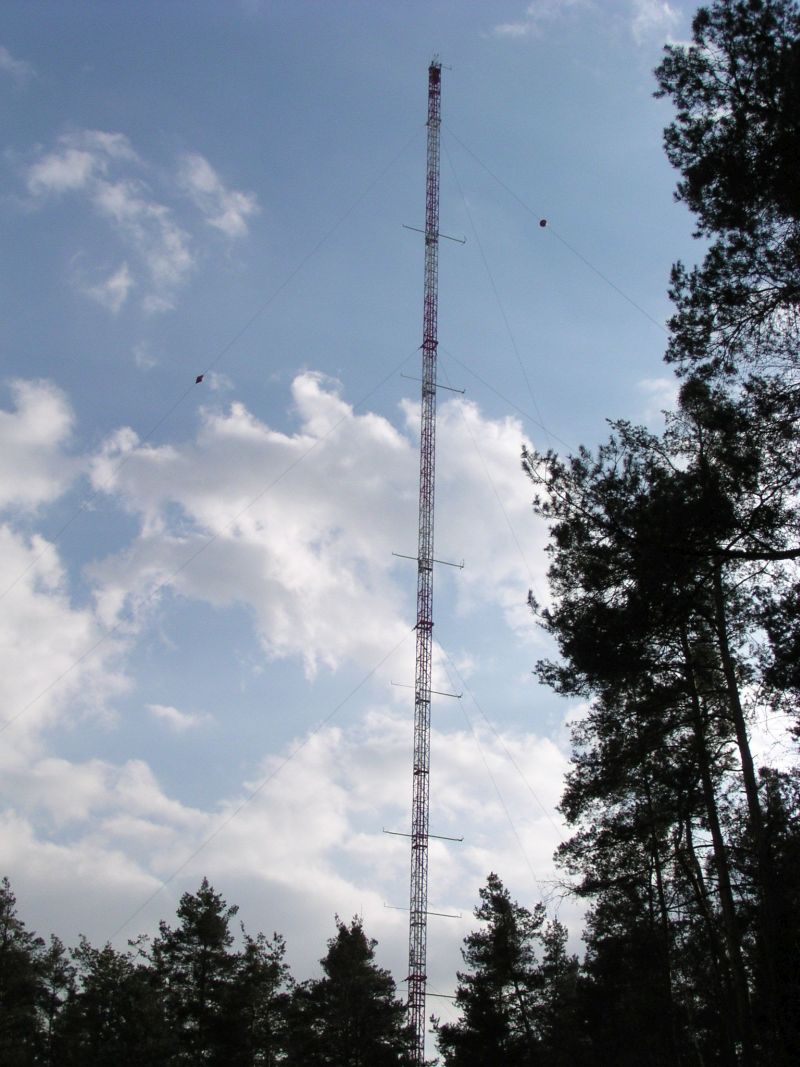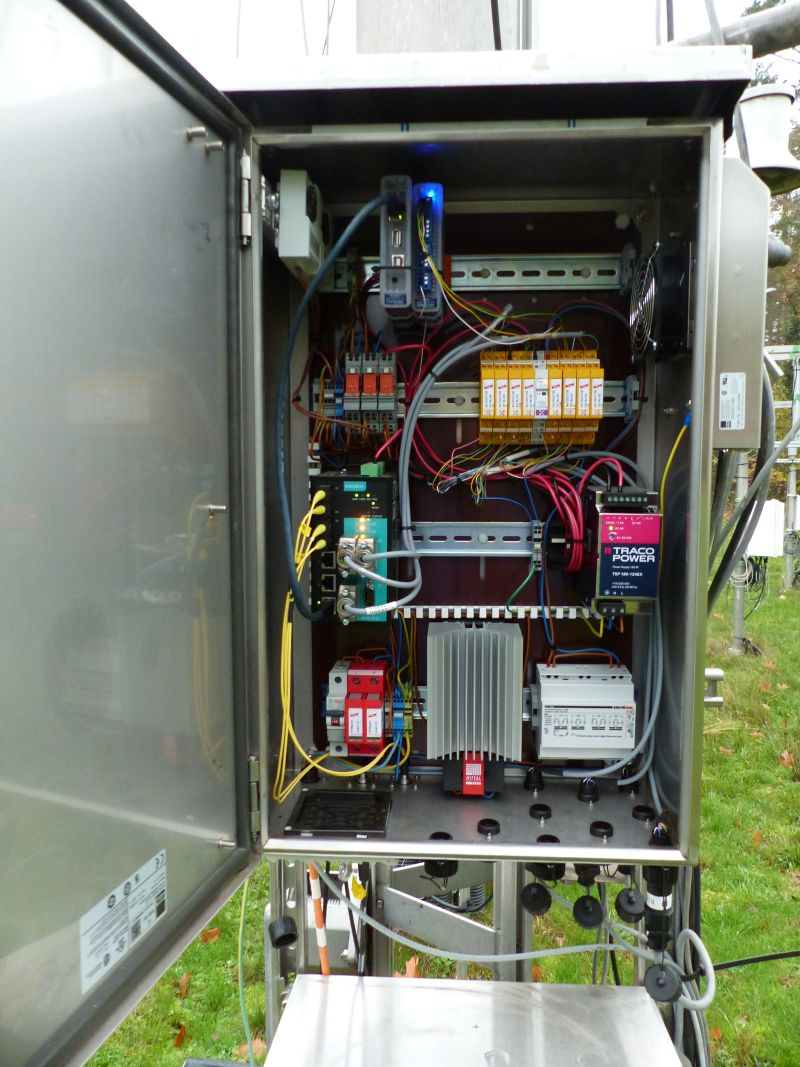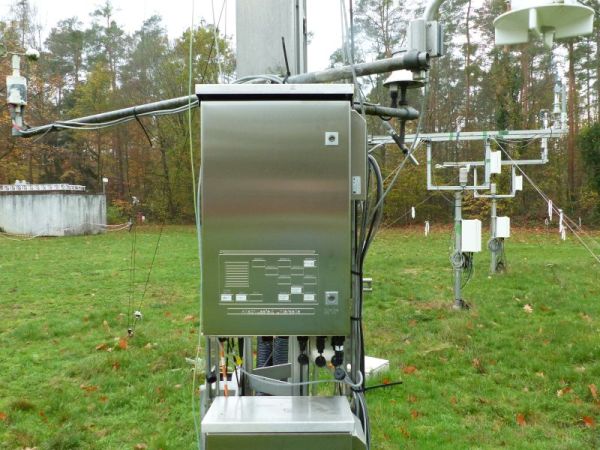Prepared for the future - Meteorological tower obtains new, modern data acquisition

The meteorological tower of the IMK was built in December 1972 (Fig.1) and has been used in the last decades for long-term climatological observations in the lower part of the boundary layer. Its height of 200 m makes it possible not only to study climate trends at the local site, but also to monitor trends over a larger catchment area (Kohler et. al, 2018). The measurements at additional heights also allow studies on changes in atmospheric stability under the influence of climate change. Another important task covered by the measurements at the tower is the management of hazardous incidents and the monitoring of nuclear installations by the Safety and Environment Division (SUM) of KIT. In recent years, further requirements have been added. Within the project Integrated Carbon Observation System (ICOS), the mast serves as a platform for the long-term monitoring of climate-relevant trace gases such as CO2, N2O, CH4, as well as radon and C14. The measuring facility is also used as a reference site for comparative measurements with remote sensing devices of KITcube, but also increasingly for comparative measurements with devices of other departments of the IMK or by external partners.
In the configuration of data acquisition valid since 1972, the central data acquisition took place in Building 103, the historic location of the meteorology department at the former Nuclear Research Centre. The sensors were connected via copper cables several hundred meters long. This basic configuration had not changed over the decades; only the electronic components in the control room were renewed several times.
Environmental influences causing the measuring cables to abrade, and the desire to create the potential to integrate new devices (the number of free connections was limited at the old facility) led to the decision to carry out a fundamental modernisation of the infrastructure.
The new concept now provides a ventilated stainless steel housing with the respective measuring modules in each measuring level; the electronics parts are protected against overvoltage by lightning protection modules (Fig. 2a and 2b). The digitisation of the data is done in each of the measuring levels; the data transfer is then carried out loss-free via optical fibres. The fibre optic cables are especially suitable for outdoor use.
The data acquisition server, which monitors the measuring operation and transfers the raw data via Ethernet to a Microsoft SQL Server database, is located in a container at the foot of the meteorological tower. The data is buffered in the server, thus considerably reducing the risk of data loss in the event of network problems. An uninterruptible power supply absorbs short-term power failures and, if necessary, shuts down the system in a controlled manner. Operating faults are reported to the operators by e-mail, in addition, the facility is linked to campus security of CN.
With this new data acquisition, the IMK-TRO will be able to continue the climate observations on the 200 m tower successfully in the coming decades and is prepared for future modernisation and extension of the instrumentation.


References
Kohler, M., Metzger, J. and Kalthoff, N. (2018), Trends in temperature and wind speed from 40 years of observations at a 200-m high meteorological tower in Southwest Germany. Int. J. Climatol, 38: 23–34. doi:10.1002/joc.5157
Working group: Land Surfaces and Boundary Layer
